 While O'Rourke presented an LP very much in a Nurse With Wound style,Cyclobe have obliterated most traces of Stapleton and Potter's rawmaterial and instead produced a freak out of frayed electronics thatsounds much closer to the work of their former colleagues in Coil.Although their "Part One" begins with sparse drones and eerie ambience,the stereo field soon becomes a battleground on which sharp bursts fromanalog synths whirr back and forth.
While O'Rourke presented an LP very much in a Nurse With Wound style,Cyclobe have obliterated most traces of Stapleton and Potter's rawmaterial and instead produced a freak out of frayed electronics thatsounds much closer to the work of their former colleagues in Coil.Although their "Part One" begins with sparse drones and eerie ambience,the stereo field soon becomes a battleground on which sharp bursts fromanalog synths whirr back and forth.
Two new shows just for you. We have squeezed out two extended release episodes for this weekend to get you through this week. They contain mostly new songs but there's also new issues from the vaults. The first show features music from Rider/Horse, Mint Field, Robert Aiki Aubrey Lowe, Anastasia Coope, ISAN, Stone Music, La Securite, Bark Psychosis, Jon Rose, Master Wilburn Burchette, Umberto, Wand, Tim Koh, Sun An, and Memory Drawings. The second episode has music by Laibach, Melt-Banana, Chuck Johnson, X, K. Yoshimatsu, Dorothy Carter, Pavel Milyakov, Violence Gratuite, Mark Templeton, Dummy, Endon, body / negative, Midwife, Alberto Boccardi, Divine. Cow in Maui from Veronika in Vienna. Get involved: subscribe, review, rate, share with your friends, send images! |



 O'Rourke's version of Nurse With Wound's source material keeps veryclose to the spirit of a Nurse With Wound album. This is partly due tothe common reference points both artists share, but partly because itseems that he has used much of the raw material provided by Stapletonand Potter without changing it at all. Nurse With Wound and O'Rourkeare two of the few artists who can sustain interest while essentiallypresenting an entire LP side of creaking sounds set against doom ladenambient soundscapes.
O'Rourke's version of Nurse With Wound's source material keeps veryclose to the spirit of a Nurse With Wound album. This is partly due tothe common reference points both artists share, but partly because itseems that he has used much of the raw material provided by Stapletonand Potter without changing it at all. Nurse With Wound and O'Rourkeare two of the few artists who can sustain interest while essentiallypresenting an entire LP side of creaking sounds set against doom ladenambient soundscapes.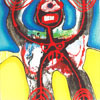 It's frustrating that one of the best Nurse With Wound albums in recentyears will probably slip through the cracks of formatting politics.Available to purchase only as a bonus vinyl LP with a pre-order of allthree collaborative albums, Raw Material-Zero Mixmay not be heard by many people. Although it was merely meant toprovide source material to be reworked by Jim O'Rourke, Cyclobe andIrr.App.(Ext.), this album should have been released on its own.
It's frustrating that one of the best Nurse With Wound albums in recentyears will probably slip through the cracks of formatting politics.Available to purchase only as a bonus vinyl LP with a pre-order of allthree collaborative albums, Raw Material-Zero Mixmay not be heard by many people. Although it was merely meant toprovide source material to be reworked by Jim O'Rourke, Cyclobe andIrr.App.(Ext.), this album should have been released on its own.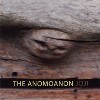 Though Ned Oldham has never needed to live under the shadow of hisfamily name — like it would be a bad thing if he did — he has recordedmusic with his brothers in a number of projects over the years,including his own The Anomoanon. This has helped shape the style of hismusic, but on Jojihe steps out large in his own direction, creating one of those recordsthat many will point to for years to come as the sound that defined theband and others in the genre.
Though Ned Oldham has never needed to live under the shadow of hisfamily name — like it would be a bad thing if he did — he has recordedmusic with his brothers in a number of projects over the years,including his own The Anomoanon. This has helped shape the style of hismusic, but on Jojihe steps out large in his own direction, creating one of those recordsthat many will point to for years to come as the sound that defined theband and others in the genre.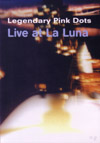 Soleilmoon's new DVD release of 1998's Live at La Luna
VHS adds absolutely nothing to the original release, sharing the same
set list and running time, and boasting absolutely zero extras. Most
disappointingly, the DVD does not even have chapter stops, making it
impossible to cue forward or back at anything more than double speed.
Would it have killed Soleilmoon to put some chapter stops between
songs?
Soleilmoon's new DVD release of 1998's Live at La Luna
VHS adds absolutely nothing to the original release, sharing the same
set list and running time, and boasting absolutely zero extras. Most
disappointingly, the DVD does not even have chapter stops, making it
impossible to cue forward or back at anything more than double speed.
Would it have killed Soleilmoon to put some chapter stops between
songs?
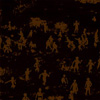 Sightings are keeping music dangerous. At a recent local liveappearance guitarist Mark Morgan was not ready to hit the stage untilhe was almost unable to walk through the crowd without falling over. Arrived in Goldis the sound of a band unafraid to shred the rock 'n' roll rulebooklike so much cheese going through a grater. They are capable of beingeither a devastatingly intense noise outfit or a kick-ass rock 'n' rollband, but their strength is in combining the two approaches. Althoughtrack three, "Odds On," hints at a linear structure, not until thefourth track does anything resembling a "song" appear. Because thefirst three tracks are so abstract and fragmented, "Internal Compass"sounds all the more powerful with its chugging guitar and drumspattern. It's like a train is on an express through the eardrum canals,not stopping for pedestrians. On "Sugar Sediment," the rhythm sectionis locked into a steady, rolling groove, yet the guitar sounds morelike a chainsaw than a melody making instrument. This tension is whatkeeps the music so exciting. Rather than merely relying on trendyelectronics for strange sounds, Sightings achieve a much tougher goalby producing foreign sounds on familiar instruments. They often lockinto live patterns that sound looped, such as on "Switching toJudgement." As a whole, Arrived in Gold has just the rightproduction quality, sounding raw and spontaneous without soundingamateurish. The full spectrum of frequencies is certainly representedduring "One Out Of Ten," in which throbbing bass and screechinghigh-end guitar are simultaneously competing to deafen. All of theinstruments are clearly audible at all times, yet the set maintains apleasant grittiness throughout. Ten minute album closer "Arrived InGold, Arrived In Smoke" is a perfect distillation of all of theseelements. During the first five minutes Sightings gradually buildlayers of grinding, repetitive patterns until they arrive at all-outfeedback mayhem. The remaining five minutes of sparse pitter-patterelectronics and rumbling guitar feedback are a necessary come-down fromthe intensity of the album's preceding 33 minutes.
Sightings are keeping music dangerous. At a recent local liveappearance guitarist Mark Morgan was not ready to hit the stage untilhe was almost unable to walk through the crowd without falling over. Arrived in Goldis the sound of a band unafraid to shred the rock 'n' roll rulebooklike so much cheese going through a grater. They are capable of beingeither a devastatingly intense noise outfit or a kick-ass rock 'n' rollband, but their strength is in combining the two approaches. Althoughtrack three, "Odds On," hints at a linear structure, not until thefourth track does anything resembling a "song" appear. Because thefirst three tracks are so abstract and fragmented, "Internal Compass"sounds all the more powerful with its chugging guitar and drumspattern. It's like a train is on an express through the eardrum canals,not stopping for pedestrians. On "Sugar Sediment," the rhythm sectionis locked into a steady, rolling groove, yet the guitar sounds morelike a chainsaw than a melody making instrument. This tension is whatkeeps the music so exciting. Rather than merely relying on trendyelectronics for strange sounds, Sightings achieve a much tougher goalby producing foreign sounds on familiar instruments. They often lockinto live patterns that sound looped, such as on "Switching toJudgement." As a whole, Arrived in Gold has just the rightproduction quality, sounding raw and spontaneous without soundingamateurish. The full spectrum of frequencies is certainly representedduring "One Out Of Ten," in which throbbing bass and screechinghigh-end guitar are simultaneously competing to deafen. All of theinstruments are clearly audible at all times, yet the set maintains apleasant grittiness throughout. Ten minute album closer "Arrived InGold, Arrived In Smoke" is a perfect distillation of all of theseelements. During the first five minutes Sightings gradually buildlayers of grinding, repetitive patterns until they arrive at all-outfeedback mayhem. The remaining five minutes of sparse pitter-patterelectronics and rumbling guitar feedback are a necessary come-down fromthe intensity of the album's preceding 33 minutes.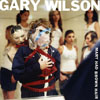 In the years since his near-miraculous rediscovery in 2002, the author of 1977's cry for help You Think You Really Know Mehas taken time off from his busy porn bookstore clerking duties torecord a second collection of fear and loathing ridden love songs. Forthe uninitiated, Gary Wilson is Endicott, NY's ("A very, VERY smalltown," as if that is ever an excuse) favorite poster boy for neurosis.A legitimate musical phenomenon in his youth, he was proficient withmultiple instruments at the age of eight and collaborated with avantgarde composer John Cage before the age of 16. But by the time GaryWilson and the Blind Dates joined the burgeoning new-wave/punk scene inNYC, something happened: no one knew what to make of Wilson or hismusic. Appearing on stage wrapped in cling film and occasionallyaccompanied by mannequins, the Blind Dates would tear through theirbizarre setlist stopping only to cover Gary in flour and milk,dismember their mannequins, or to destroy their equipment. Frustratedby New York's head-scratching response, Wilson retreated to hisparents' basement with a four track recorder and no small amount ofrepressed sexual energy to record You Think You Really Know Me, a stinging rebuke to any who professed that they did. The album'smere survival is a story in itself. By his own admission, most of the600 copies pressed were smashed over Wilson's forehead at shows. Soonafter the album's release, Wilson packed up and left small townEndicott and literally vanished, dropping off the scene entirely.Thanks to near-constant exposure on underground radio and a fewcelebrity endorsements, his legend lived on until he was uncovered inSan Diego at the turn of the milennium, playing in a house band at anItalian restaraunt and sitting behind the bulletproof glass at anallnight adult bookstore. After playing sold out shows in LA and NewYork and even releasing a film documentary, Wilson finally releases Mary Had Brown Hair,the follow-up to his cellar opus. Gone are his testosterone-fueledbellows, his uniquely organic synthesized grooves and any vestiges ofthe delightful soul/punk/funk blend that could get anyone up and movingand singing along to lyrics that are at times near-psychotic. Now mostof the 14 original tracks on Mary Had Brown Hair (the album also includes two pre-You Think You Really Know Mecuts, "original" versions of "Chromium Bitch" and a less freaky, morepsychedelic cut of the trademark "6.4 = Make Out") are backed by aCasio keyboard, playful but not particularly challenging orinteresting. Worse yet a simple drum track keeps the time for most ofthe album's 30 minutes, a marked departure from his earlier technique(though it might not have been worthy of John Bonham, Wilson wouldstill do his own drumming). Wilson's disco-era voice, scary andmesmerizing, has devolved into a warbly whine, showing the effect theyears have had on Wilson both physically and mentally. In some tracks,it is sped-up to provide a sort of duet. (Gary conversing with hisinner demons?) The bravado on You Think You Really Know Me isnow but a vague memory, perhaps just a defensive front all along. Onecould hardly imagine the swaggering Wilson of 1977 lamenting "GaryWilson feels so bad/Gary Wilson feels real sad for you/Cause you're allalone." It appears that when Wilson packed up and left Endicott, he wastrying to leave something behind, and failed miserably. Hisdemons—whatever they were, lost loves, departed lovers, the kiss neverdelivered, a cute girl he saw on the bus—have followed him, and theirheads are reared for the world to see on Mary Had Brown Hair .Now Wilson, 18 years old, balding, his voice receding, is "all alone towalk the streets of Endicott all by myself." Whatever his personalfailings may be, they are immaterial to the listener, as Wilson'steeming musical genius shines vibrantly throughout all of Mary Had Brown Hair.The hooks are infectious, the choruses are the weirdest lines you willever find yourself singing along to, and Wilson is still a skilled handat guitar and keys. 27 years later, I am forced to admit that Wilsondoes indeed "still got it," though what "it" is remains an enigma: justthe way Gary likes it.
In the years since his near-miraculous rediscovery in 2002, the author of 1977's cry for help You Think You Really Know Mehas taken time off from his busy porn bookstore clerking duties torecord a second collection of fear and loathing ridden love songs. Forthe uninitiated, Gary Wilson is Endicott, NY's ("A very, VERY smalltown," as if that is ever an excuse) favorite poster boy for neurosis.A legitimate musical phenomenon in his youth, he was proficient withmultiple instruments at the age of eight and collaborated with avantgarde composer John Cage before the age of 16. But by the time GaryWilson and the Blind Dates joined the burgeoning new-wave/punk scene inNYC, something happened: no one knew what to make of Wilson or hismusic. Appearing on stage wrapped in cling film and occasionallyaccompanied by mannequins, the Blind Dates would tear through theirbizarre setlist stopping only to cover Gary in flour and milk,dismember their mannequins, or to destroy their equipment. Frustratedby New York's head-scratching response, Wilson retreated to hisparents' basement with a four track recorder and no small amount ofrepressed sexual energy to record You Think You Really Know Me, a stinging rebuke to any who professed that they did. The album'smere survival is a story in itself. By his own admission, most of the600 copies pressed were smashed over Wilson's forehead at shows. Soonafter the album's release, Wilson packed up and left small townEndicott and literally vanished, dropping off the scene entirely.Thanks to near-constant exposure on underground radio and a fewcelebrity endorsements, his legend lived on until he was uncovered inSan Diego at the turn of the milennium, playing in a house band at anItalian restaraunt and sitting behind the bulletproof glass at anallnight adult bookstore. After playing sold out shows in LA and NewYork and even releasing a film documentary, Wilson finally releases Mary Had Brown Hair,the follow-up to his cellar opus. Gone are his testosterone-fueledbellows, his uniquely organic synthesized grooves and any vestiges ofthe delightful soul/punk/funk blend that could get anyone up and movingand singing along to lyrics that are at times near-psychotic. Now mostof the 14 original tracks on Mary Had Brown Hair (the album also includes two pre-You Think You Really Know Mecuts, "original" versions of "Chromium Bitch" and a less freaky, morepsychedelic cut of the trademark "6.4 = Make Out") are backed by aCasio keyboard, playful but not particularly challenging orinteresting. Worse yet a simple drum track keeps the time for most ofthe album's 30 minutes, a marked departure from his earlier technique(though it might not have been worthy of John Bonham, Wilson wouldstill do his own drumming). Wilson's disco-era voice, scary andmesmerizing, has devolved into a warbly whine, showing the effect theyears have had on Wilson both physically and mentally. In some tracks,it is sped-up to provide a sort of duet. (Gary conversing with hisinner demons?) The bravado on You Think You Really Know Me isnow but a vague memory, perhaps just a defensive front all along. Onecould hardly imagine the swaggering Wilson of 1977 lamenting "GaryWilson feels so bad/Gary Wilson feels real sad for you/Cause you're allalone." It appears that when Wilson packed up and left Endicott, he wastrying to leave something behind, and failed miserably. Hisdemons—whatever they were, lost loves, departed lovers, the kiss neverdelivered, a cute girl he saw on the bus—have followed him, and theirheads are reared for the world to see on Mary Had Brown Hair .Now Wilson, 18 years old, balding, his voice receding, is "all alone towalk the streets of Endicott all by myself." Whatever his personalfailings may be, they are immaterial to the listener, as Wilson'steeming musical genius shines vibrantly throughout all of Mary Had Brown Hair.The hooks are infectious, the choruses are the weirdest lines you willever find yourself singing along to, and Wilson is still a skilled handat guitar and keys. 27 years later, I am forced to admit that Wilsondoes indeed "still got it," though what "it" is remains an enigma: justthe way Gary likes it.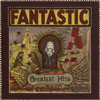 This album is a true oddity even by outsider music, vanity-pressstandards. Recorded and released in 1974 by Charlie Tweddle, a Kentuckynative and metaphysical haberdasher, the album encompassesintrospective Dylanesque folk, Appalachian music, psychedelia, fieldrecordings and radical tape experimentation. Tweddle was an art-schooldropout and an ex-member of Kansas City garage band The Prophets ofParadise when he decided to embark on a three-year lysergic tourthrough Haight-Ashbury. When he returned, his head still full of acid,he became convinced that he was a real life prophet with the mission ofbringing his peculiar brand of primitive hillbilly concrete psych tothe world. And so he got together with six guys that look like extrasfrom The Texas Chainsaw Massacre and recorded an LP combining hisoff-kilter songwriting with sudden, frightening excursions intoalarmingly atmospheric tape music. He dubbed the prophet part ofhimself Eilrahc Elddewt (Charlie Tweddle backwards) and wrote someastoundingly boastful liner notes: "Eilrahc is to music what Christ isto religion. This album will reach into the dustbins of your mind." Thealbum definitely reaches into something, but it's not my mind, it's adeep toybox of warped, drug-addled insanity. The opening track soundsinnocuous enough, a low-fidelity recording of a Dylan-influenced folksong, but soon there are strange things afoot: odd time signatures,strange tape effects, weird percussion. The second track, which I willcall "Hot Tamales" (all eight tracks are untitled), takes a jauntyTex-Mex tune and distorts it with sudden launches of time-compressedmariachi music. On track four, Tweddle and his pals perform aprimitive, ramshackle rendition of the gospel standard "This World IsNot My Home" (Incredible String Fans take note), adding a soundtrack ofchirping crickets to the background. Tweddle's obsession with UFOsreaches a nightmarish zenith on track six, which distorts fieldrecordings of seagulls into a menacing alien noise, while Tweddlenarrates his close encounter story: "In the darkness of the night, alight came dropping from above...The ship was landing on the shore/Andcoming from the ship...three creatures pointed to the sea...as youenter from beneath the ship, the figures follow you/It was a night oflove/You stood gazing into the eyes of your future/As the sea sang thesong with no words." The lysergic vocal mutations are dizzying, andadding to the confusion, Tweddle's narration competes with a recordingof himself playing "Blue Bonnet Lane." I figured that was about asstrange as this album could get, until I reached track eight, which isa 22-minute field recording of crickets chirping on a still, peacefulcountry night, as music plays in a far distant background. It's anabsolutely haunting end to one of the most idiosyncratic non-Jandekworks of outsider music I've ever heard. Companion Records does a greatjob with reissuing a record that was previously only available to themost diligent flea market crate diggers, adding six bonus tracks ofequally inventive music by Tweddle and retaining the original design ofthe packaging. Just when I think it's safe to be completely jaded anddisillusioned by the glut of over-hyped reissues of vinyl artifacts,along comes an album like Fantastic Greatest Hits, forcing me to wonder what other bits of unhinged genius might be hiding out there in history's dustbin.
This album is a true oddity even by outsider music, vanity-pressstandards. Recorded and released in 1974 by Charlie Tweddle, a Kentuckynative and metaphysical haberdasher, the album encompassesintrospective Dylanesque folk, Appalachian music, psychedelia, fieldrecordings and radical tape experimentation. Tweddle was an art-schooldropout and an ex-member of Kansas City garage band The Prophets ofParadise when he decided to embark on a three-year lysergic tourthrough Haight-Ashbury. When he returned, his head still full of acid,he became convinced that he was a real life prophet with the mission ofbringing his peculiar brand of primitive hillbilly concrete psych tothe world. And so he got together with six guys that look like extrasfrom The Texas Chainsaw Massacre and recorded an LP combining hisoff-kilter songwriting with sudden, frightening excursions intoalarmingly atmospheric tape music. He dubbed the prophet part ofhimself Eilrahc Elddewt (Charlie Tweddle backwards) and wrote someastoundingly boastful liner notes: "Eilrahc is to music what Christ isto religion. This album will reach into the dustbins of your mind." Thealbum definitely reaches into something, but it's not my mind, it's adeep toybox of warped, drug-addled insanity. The opening track soundsinnocuous enough, a low-fidelity recording of a Dylan-influenced folksong, but soon there are strange things afoot: odd time signatures,strange tape effects, weird percussion. The second track, which I willcall "Hot Tamales" (all eight tracks are untitled), takes a jauntyTex-Mex tune and distorts it with sudden launches of time-compressedmariachi music. On track four, Tweddle and his pals perform aprimitive, ramshackle rendition of the gospel standard "This World IsNot My Home" (Incredible String Fans take note), adding a soundtrack ofchirping crickets to the background. Tweddle's obsession with UFOsreaches a nightmarish zenith on track six, which distorts fieldrecordings of seagulls into a menacing alien noise, while Tweddlenarrates his close encounter story: "In the darkness of the night, alight came dropping from above...The ship was landing on the shore/Andcoming from the ship...three creatures pointed to the sea...as youenter from beneath the ship, the figures follow you/It was a night oflove/You stood gazing into the eyes of your future/As the sea sang thesong with no words." The lysergic vocal mutations are dizzying, andadding to the confusion, Tweddle's narration competes with a recordingof himself playing "Blue Bonnet Lane." I figured that was about asstrange as this album could get, until I reached track eight, which isa 22-minute field recording of crickets chirping on a still, peacefulcountry night, as music plays in a far distant background. It's anabsolutely haunting end to one of the most idiosyncratic non-Jandekworks of outsider music I've ever heard. Companion Records does a greatjob with reissuing a record that was previously only available to themost diligent flea market crate diggers, adding six bonus tracks ofequally inventive music by Tweddle and retaining the original design ofthe packaging. Just when I think it's safe to be completely jaded anddisillusioned by the glut of over-hyped reissues of vinyl artifacts,along comes an album like Fantastic Greatest Hits, forcing me to wonder what other bits of unhinged genius might be hiding out there in history's dustbin.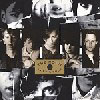 The Room thrived in the late 1980s and embraced a variety of sounds:British new wave, jangle pop, alt-pop, and others. One of the hallmarksof the original In Evil HourLP was that it was originally produced by Tom Verlaine but this onlyprovides a minor understanding of the disparate sounds contained. Theopener, "A Shirt Of Fire," sparks the album with a panoply of layeredand melodic guitar lines and breathy vocals. The chorus of the songconcludes each time with an utterly compelling tempo change,transitioning from a brisk sprint to a deliberate and contemplativewaltz, guitars all the while mimicking the pace. After the downshift,the song then collects itself back into the original tempo with anascending wall of frantically-strummed guitar. "A Shirt Of Fire"instantly recalls bands like Echo and the Bunnymen and The Chameleons.The similarities persist throughout the album, as well. Signaturebreathy vocals, the angularity of the guitars, and imploring lyrics areall distinctly Echoey and Bunnyish at the same time. Perhaps thepremier song on this collection is the tingly "New Dreams For Old." Thesong is prudently represented twice, once as the original album cut andthen as a version featuring horns from a 7-inch release. Both times, itis impossible to deny the brilliance of the song. The first 20 secondsare enough to turn heads: a shimmery guitar intro is swept up by anorgan almost too soon and sure enough everything else thereafter fallsinto place. The rest is pure Brit-pop, reminiscent of Britain's finestlabels who peddled such sounds: Sarah, Creation, 53rd + 3rd, Subway. Onthe contrary, the worst moments come when The Room acquiesce to atemptation which corrupted many of their Brit-pop contemporaries. Theintroduction of lounge music into indie Brit-pop was a truly abhorrentdevelopment which cauterized some unlucky alt-pop bands, largelyBritish, in the late 1980s and early 1990s—and it wasn't just Brit-popwhich suffered under this detestable hybridization. By the mid 1990s,trip-hop, acid jazz, and a host of other musical subgenres popped upwhich had lounge music as their root evil. Even hermetic hip-hop had aperhaps less noxious flirtation with lounge, seen in bands like DigablePlanets. Along those same lines, The Room were not savvy enough toresist the urge of lounge music in some of their compositions. Songslike "Numb" and "Never" are Bossa Novean belchings which sound likesomething Getz and Gilberto might have coughed up in their bettermoments. It could be that The Room were merely partaking in thatuniversal pastime to which all bands are eventually drawn, what mostwill call "growing as a band and maturing musically." Generally, thisis just obfuscation for an unfortunate divergence from a well-honedsound in favor of a less-palateable direction. Such is the case here.Thankfully, the lounginess tends to pop up only in the later material,songs which were taken from the Clear! EP. Intermingled withthese rather disappointing cuts are crisper songs which areunassailably new wave ("The Ride," for instance) and have a much easiertime meshing with the overall sound of The Room. In the end, the powerof the jangle and synthesizers is largely able to dissipate all that issmoky, jazzy, and upholstered with plush red velvet from The Room.
The Room thrived in the late 1980s and embraced a variety of sounds:British new wave, jangle pop, alt-pop, and others. One of the hallmarksof the original In Evil HourLP was that it was originally produced by Tom Verlaine but this onlyprovides a minor understanding of the disparate sounds contained. Theopener, "A Shirt Of Fire," sparks the album with a panoply of layeredand melodic guitar lines and breathy vocals. The chorus of the songconcludes each time with an utterly compelling tempo change,transitioning from a brisk sprint to a deliberate and contemplativewaltz, guitars all the while mimicking the pace. After the downshift,the song then collects itself back into the original tempo with anascending wall of frantically-strummed guitar. "A Shirt Of Fire"instantly recalls bands like Echo and the Bunnymen and The Chameleons.The similarities persist throughout the album, as well. Signaturebreathy vocals, the angularity of the guitars, and imploring lyrics areall distinctly Echoey and Bunnyish at the same time. Perhaps thepremier song on this collection is the tingly "New Dreams For Old." Thesong is prudently represented twice, once as the original album cut andthen as a version featuring horns from a 7-inch release. Both times, itis impossible to deny the brilliance of the song. The first 20 secondsare enough to turn heads: a shimmery guitar intro is swept up by anorgan almost too soon and sure enough everything else thereafter fallsinto place. The rest is pure Brit-pop, reminiscent of Britain's finestlabels who peddled such sounds: Sarah, Creation, 53rd + 3rd, Subway. Onthe contrary, the worst moments come when The Room acquiesce to atemptation which corrupted many of their Brit-pop contemporaries. Theintroduction of lounge music into indie Brit-pop was a truly abhorrentdevelopment which cauterized some unlucky alt-pop bands, largelyBritish, in the late 1980s and early 1990s—and it wasn't just Brit-popwhich suffered under this detestable hybridization. By the mid 1990s,trip-hop, acid jazz, and a host of other musical subgenres popped upwhich had lounge music as their root evil. Even hermetic hip-hop had aperhaps less noxious flirtation with lounge, seen in bands like DigablePlanets. Along those same lines, The Room were not savvy enough toresist the urge of lounge music in some of their compositions. Songslike "Numb" and "Never" are Bossa Novean belchings which sound likesomething Getz and Gilberto might have coughed up in their bettermoments. It could be that The Room were merely partaking in thatuniversal pastime to which all bands are eventually drawn, what mostwill call "growing as a band and maturing musically." Generally, thisis just obfuscation for an unfortunate divergence from a well-honedsound in favor of a less-palateable direction. Such is the case here.Thankfully, the lounginess tends to pop up only in the later material,songs which were taken from the Clear! EP. Intermingled withthese rather disappointing cuts are crisper songs which areunassailably new wave ("The Ride," for instance) and have a much easiertime meshing with the overall sound of The Room. In the end, the powerof the jangle and synthesizers is largely able to dissipate all that issmoky, jazzy, and upholstered with plush red velvet from The Room.
